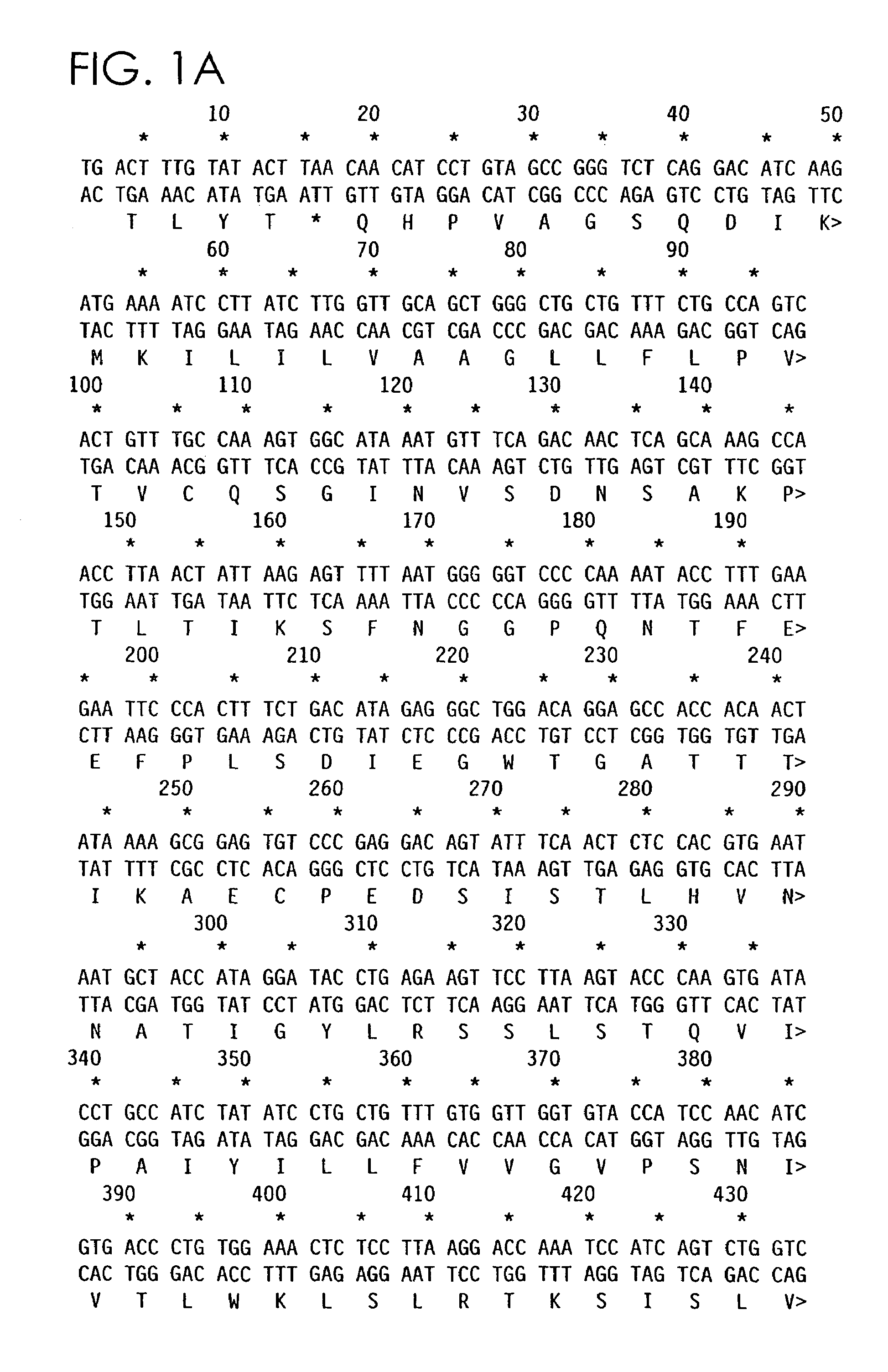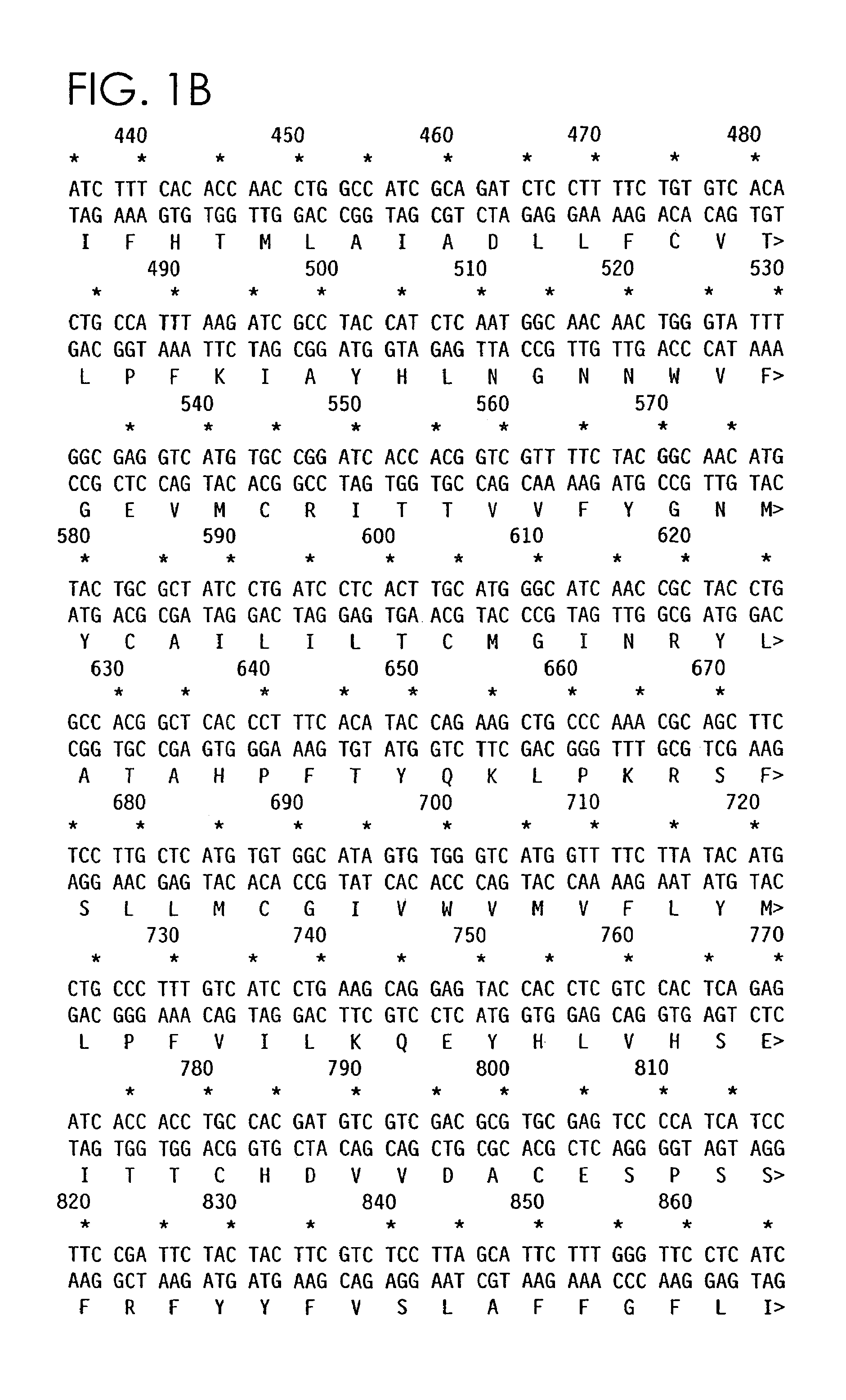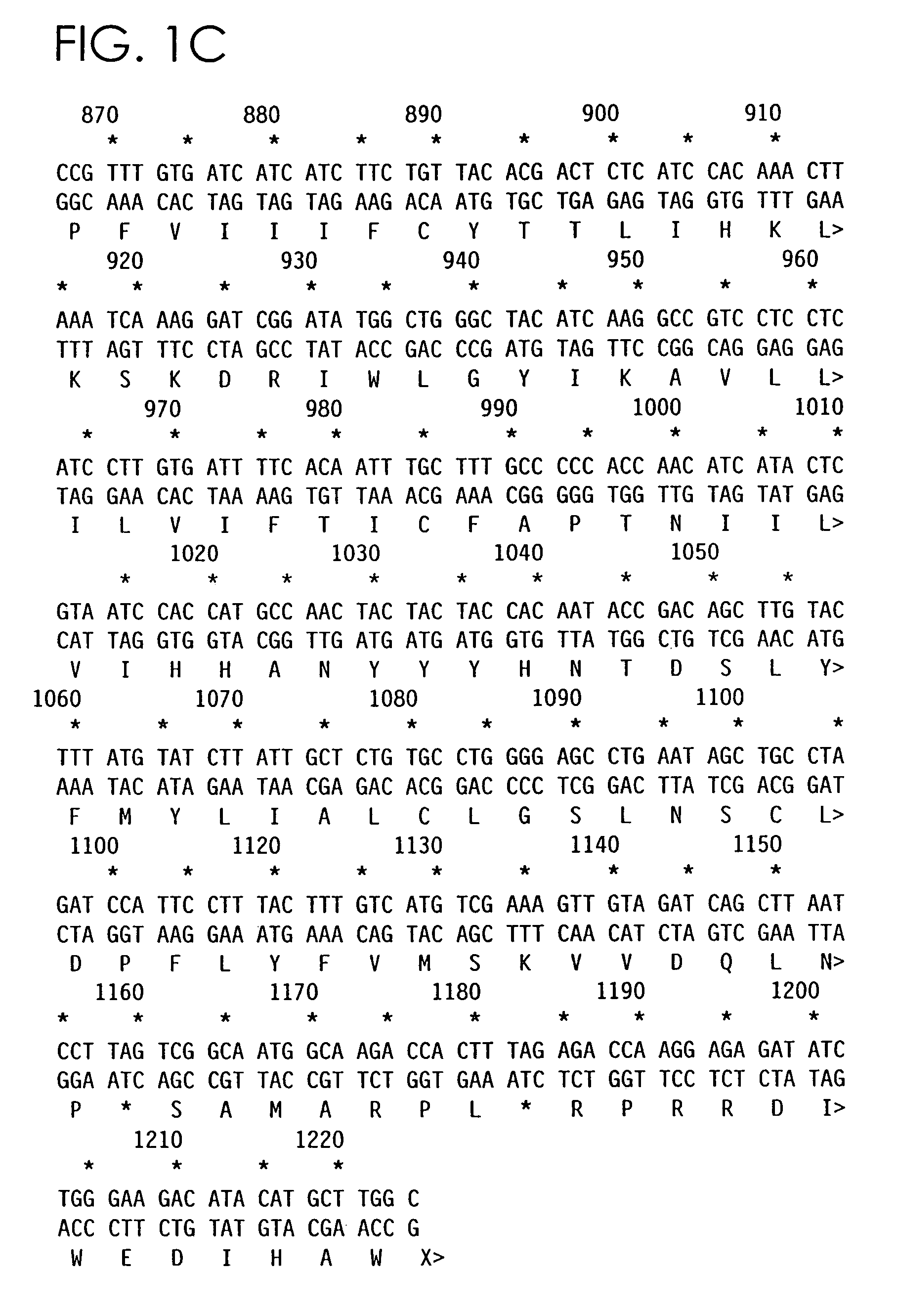Protease-activated receptor 3 and uses thereof
a technology of protease-activated receptor and receptor, applied in the field of nucleic acids, can solve problems such as stroke and attack
- Summary
- Abstract
- Description
- Claims
- Application Information
AI Technical Summary
Benefits of technology
Problems solved by technology
Method used
Image
Examples
example 1
Isolation of the Mouse Protease-Activated Receptor 3
[0057]Rat platelets were used as a source of RNA in the search for and cloning of PAR3 because rat platelets are more abundant than mouse platelets and, like mouse platelets, they do not respond to PAR1 agonist peptides (Connolly, A. et al. (1996) Nature 381: 516–519; and Connolly, T. M. et al (1994) Thromb Haemost 72: 627–33).
[0058]Total RNA was prepared from rat platelets using Trizol reagent (Gibco BRL). cDNA was then prepared using random hexamer primers and the Superscript reverse transcriptase system (Gibco, BRL). cDNA was then used as template for PCR amplification using a Robocycler Gradient 96® (Stratagene) and the primers 5′-GTITACATGCTI(A / C)AC(C / T)TIGCI(A / C / G / T)TIGC(A / C / G / T)GA-3′ (SEQ ID NO:10) and 5′-GGATAIACIACIGCIA(A / G / T)(A / G)(A / T)AIC(G / T)(A / C / G / T)TC-3′ (SEQ ID NO:11) at 5 μM in 20 μM Tris-HCl (pH 8.4), 50 μM KCl, 1.5 μM MgCl2, 0.2 μM DNTP, and 50 U / μl Taq polymerase. Polymerase chain reaction temperature was varied a...
example 2
Polypeptide Expression
[0064]Polypeptides according to the invention may be produced by transformation of a suitable host cell with all or part of a PAR3 encoding cDNA fragment (e.g., the cDNAs described above) in a suitable expression vehicle, and expression of the receptor.
[0065]Those skilled in the field of molecular biology will understand that any of a wide variety of expression systems may be used to provide the recombinant receptor protein. The precise host cell used is not critical to the invention. The receptor may be produced in a prokaryotic host (e.g., E. coli) or in a eukaryotic host (e.g., Saccharomyces cerevisiae or mammalian cells, e.g., COS-6M, COS-7, NIH / 3T3, or Chinese Hamster Ovary cells). Such cells are available from a wide range of sources (e.g., the American Type Culture Collection, Rockville, Md.). The method of transfection and the choice of expression vehicle will depend on the host system selected. Transformation and mammalian cell transfection methods are...
example 3
Cleavage and Activation Studies of the Recombinant Protease-Activated Receptor 3
[0072]PAR3 was demonstrated to be a substrate for thrombin when expressed on the surface of Cos 7 cells (FIG. 6). Human PAR1 or PAR3 cDNAs that were modified to encode receptors displaying a FLAG epitope (amino acid sequence DYKDDD (SEQ ID NO:12) at a site amino to the thrombin cleavage site were transiently expressed in Cos7 cells. Epitope-tagged PAR1 has been previously described (Ishii, K. et al. (1993) J. Biol. Chem. 268:9780–9786). The analogous epitope-tagged PAR3 cDNA was constructed so as to encode a new amino terminus with the sequence MDSKGSSQKGSRLLLLLVVSNLLLCQGVVS / DYKDDDDVE-TF (SEQ ID NO:13) representing the prolactin signal peptide, putative signal peptidase site ( / ), FLAG epitope DYKDDDD (SEQ ID NO:12) and junction VE fused to amino acid 17 in PAR 3.
[0073]cDNAs were subcloned into the mammalian expression vector pBJ1. For receptor cleavage studies Cos 7 cells were transfected using DEAE-dext...
PUM
| Property | Measurement | Unit |
|---|---|---|
| Fraction | aaaaa | aaaaa |
| Fraction | aaaaa | aaaaa |
| Fraction | aaaaa | aaaaa |
Abstract
Description
Claims
Application Information
 Login to View More
Login to View More - R&D
- Intellectual Property
- Life Sciences
- Materials
- Tech Scout
- Unparalleled Data Quality
- Higher Quality Content
- 60% Fewer Hallucinations
Browse by: Latest US Patents, China's latest patents, Technical Efficacy Thesaurus, Application Domain, Technology Topic, Popular Technical Reports.
© 2025 PatSnap. All rights reserved.Legal|Privacy policy|Modern Slavery Act Transparency Statement|Sitemap|About US| Contact US: help@patsnap.com



